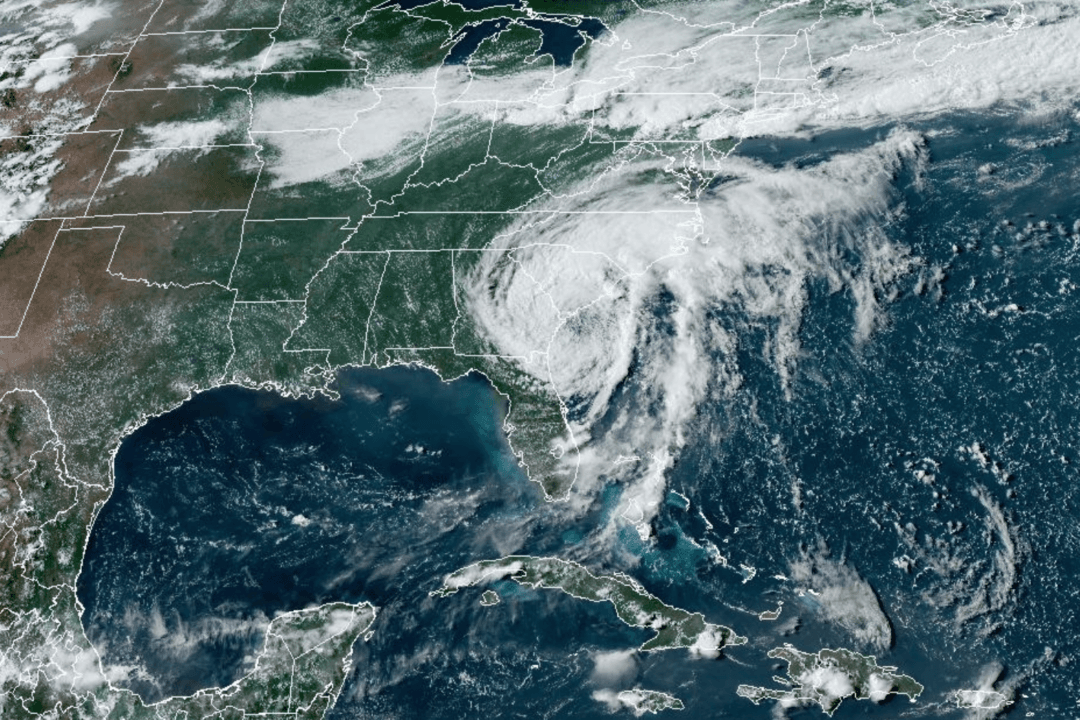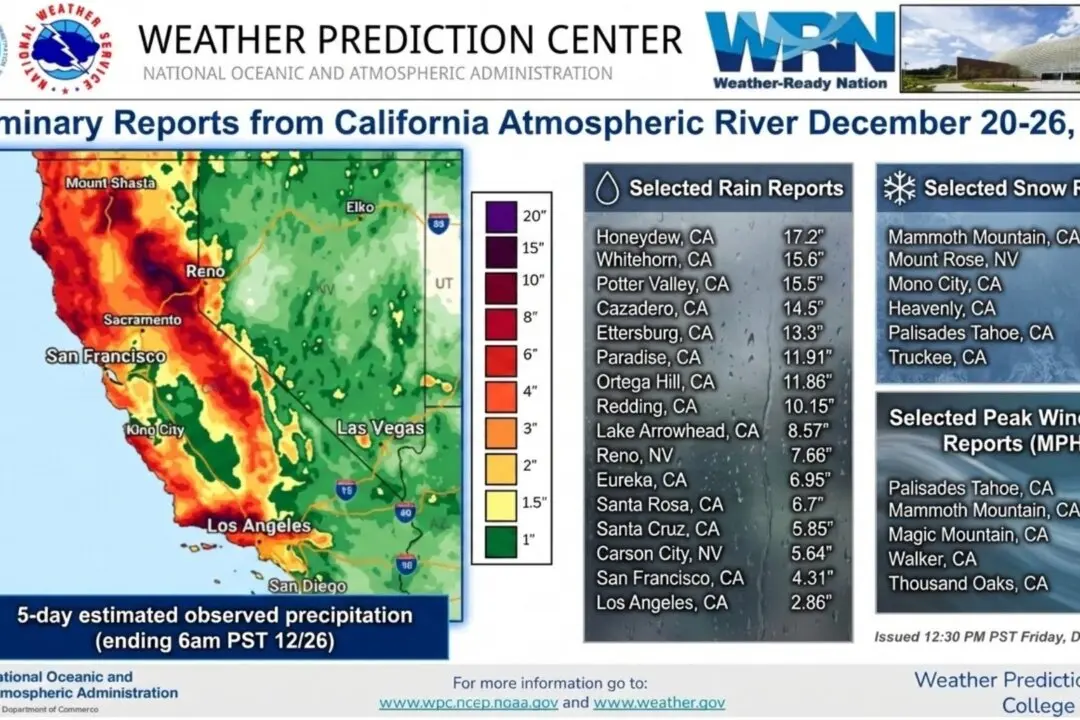TAMPA, Fla.—South Carolina braces for potentially catastrophic rain and flooding as Tropical Storm Debby maintains its strength but nearly comes to a stop just off the coast.
The National Hurricane Center (NHC) marked the storm’s center 10 miles east of Savannah, Georgia, at 5 p.m. on Aug. 6, moving at just 3 mph, while the National Weather Service’s radar shows its rain-filled bands stretching across the coast from Jacksonville, Florida, to Norfolk, Virginia.





